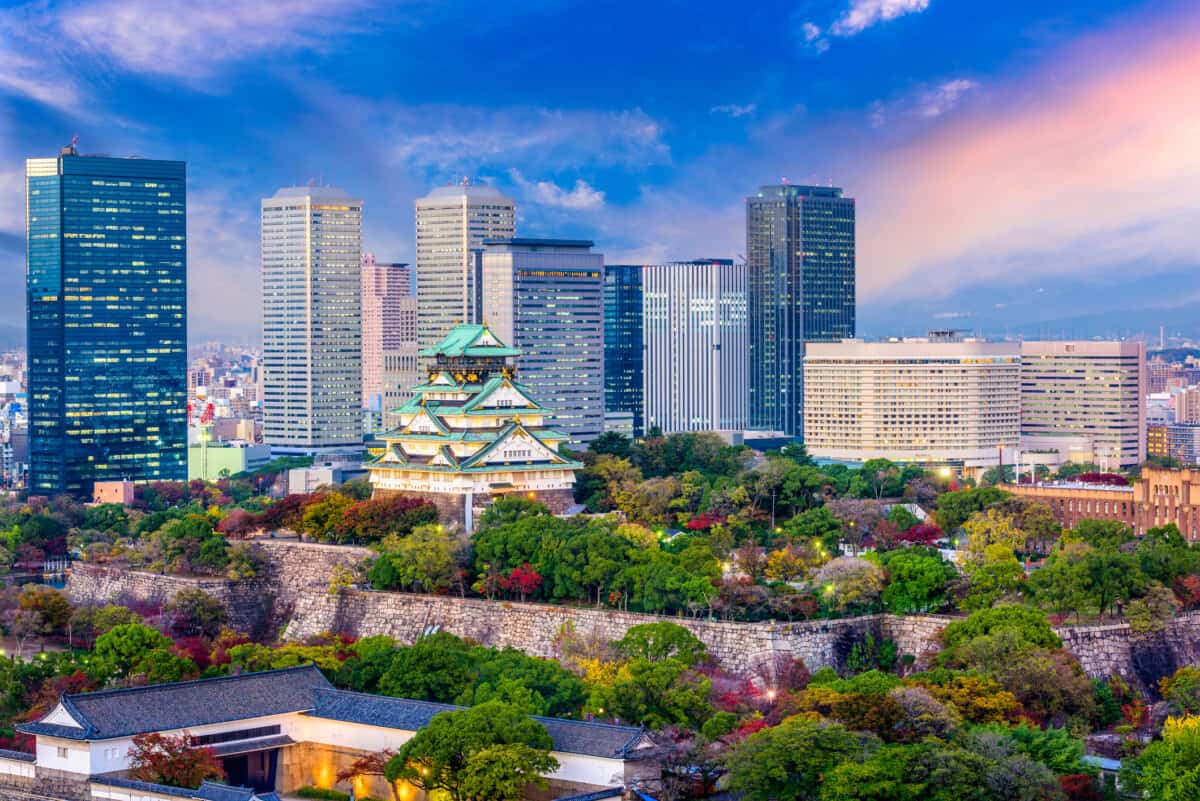Osaka is a city known for its food. Commonly called the nation’s kitchen or in Japanese (tenka no daidokoro) and a title rightly given. My first time in Osaka was one filled with such great foods. I love Tokyo, but Osaka is the place to be for a culinary adventure.
In total Osaka earned its nickname as the nation’s kitchen in the Edo era (1603 – 1868). Primarily because it was the center of trade for rice. Osaka’s reputation has only grown over the decades and it’s truly a place to experience the culinary expertise of Japan.
Osaka has many delicious culinary delights that truly are alien to western taste buds. A mecca for the adventurous diner and foods prepared to perfection in so many restaurants big and small. Ten of my personal favorites and those that are well known among Osakans.
- Takoyaki
- Tecchiri
- Kitsune Udon
- Taiko Manju
- Oshizushi
- Kushikatsu
- Negiyaki
- Okonomiyaki
- Horumonyaki
- Doteyaki
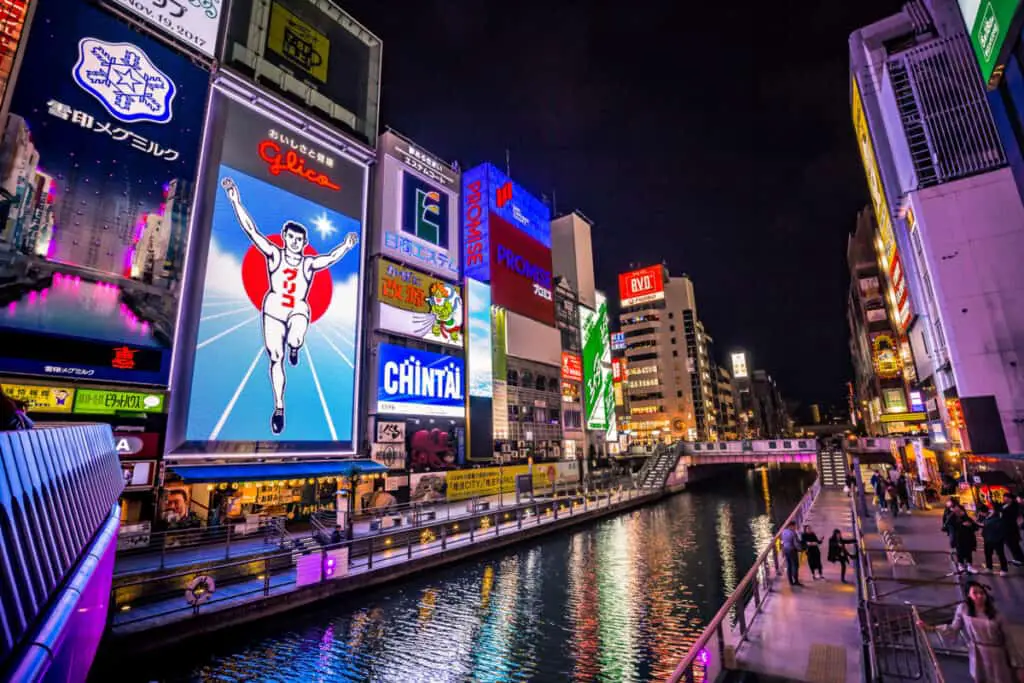
Dotonbori
The main area you will want to include with your time in Osaka is Dotonbori. An area filled with more restaurants you could patronize in a lifetime, and more neon than you’ll find in Vegas.
As a whole Dontonbori is Osaka’s best-known area for a culinary adventure. Filled with restaurants, bars, endless amounts of neon signage, a huge mechanical moving crab at Kani Doraku Dotonbori honten a restaurant known for its crab dishes. The central point of Dotonbori is the Glico running man sign.
Dotonbori gets its name from the canal which flows thru the area. Over 1.5 miles in length the entertainment area is located on both sides of the canal.
River cruises are available on open-air boats that slowly meander thru the sea of neon. A great way to relax and take in the sights sounds and smells aboard Tombori River Cruises.
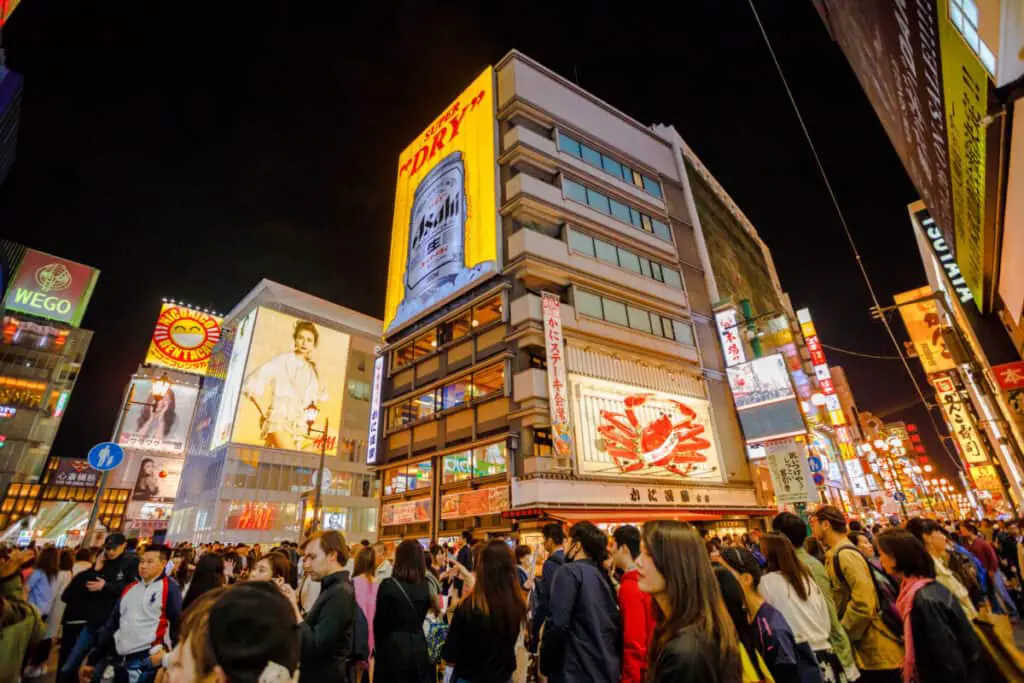
I thoroughly enjoyed the relaxing cruise and took dozens of great photos because of the neon and the crowds made it a great photoshoot. There was light rain and rain jackets were provided by the cruise service.
These bright yellow boats travel up and down the canal, approximately every half hour and the cruise itself takes 20 minutes, departures at Taizaemonbashi dock travel the canal to Nihonbashi, and return to its point of origin. Prices for the cruise are 1,000 Yen for adults and 400 Yen for children.
Cruises may not operate if the weather is exceptionally bad or the ocean tide levels are too extreme. You will need to check with the operation online or at the departure point where tickets are purchased.
One Japanese plum a day is an escape from that one day struggle
Japanese proverb
The entire boat can be chartered for 40,000 Yen. Boats have a capacity of up to 70 persons. Charters will accept groups of as little as 10 persons.
One thing to consider is if you are planning several days in Osaka then you should consider the
Currently, this pass offers a one-time fee for 40 different attractions, buses, and trains at a very reasonable price. One-day pass prices are 2,800 Yen and 2-day passes are 36,000. It’s a great deal if your itinerary includes lots of tourists attractions and travel across the city.
Osaka Castle And Museum
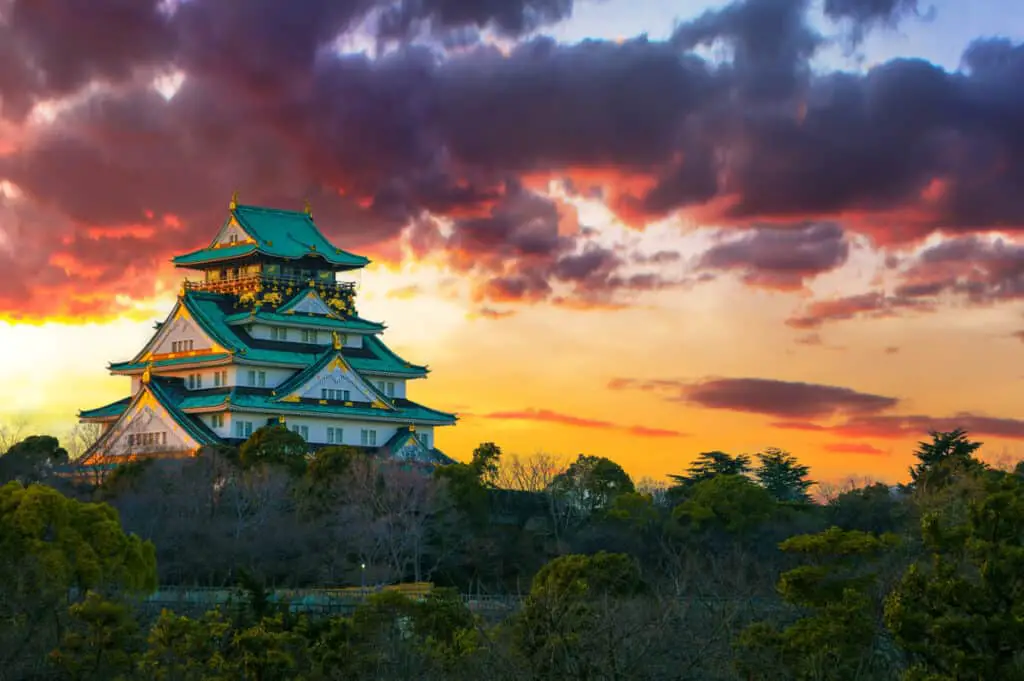
There are so many photogenic spots around the castle it’s hard to get a bad photo of it. Osaka castle survived the fire bombings of WW II and had had a major facelift in recent decades.
Osaka castle itself has been destroyed by enemy forces, fire, and lightning in previous centuries. Known for its dazzling white walls and green tile roof. The current version was built in 1931 after citizens raised funds for its reconstruction. The castle again having major restoration work in 1997.
History of Osaka Castle
The original Osaka Castle was built late in the 16th century. The first construction was built on an earlier temple site that had been destroyed over a decade before construction began. At the time of its completion, it was the largest castle in all of Japan .
The first Osaka castle was destroyed by attacking troops only a few years post-completion. The castle was rebuilt after enemies had destroyed the first incarnation and again the castle was destroyed by fire in 1665 by a lightning strike.
The last castle before the current one was again burned by enemies in 1868.
Today the castle is home to the Nishinomaru Gardens. The gardens contain hundreds of cherry trees, a water-filled double moat, and a tea house.
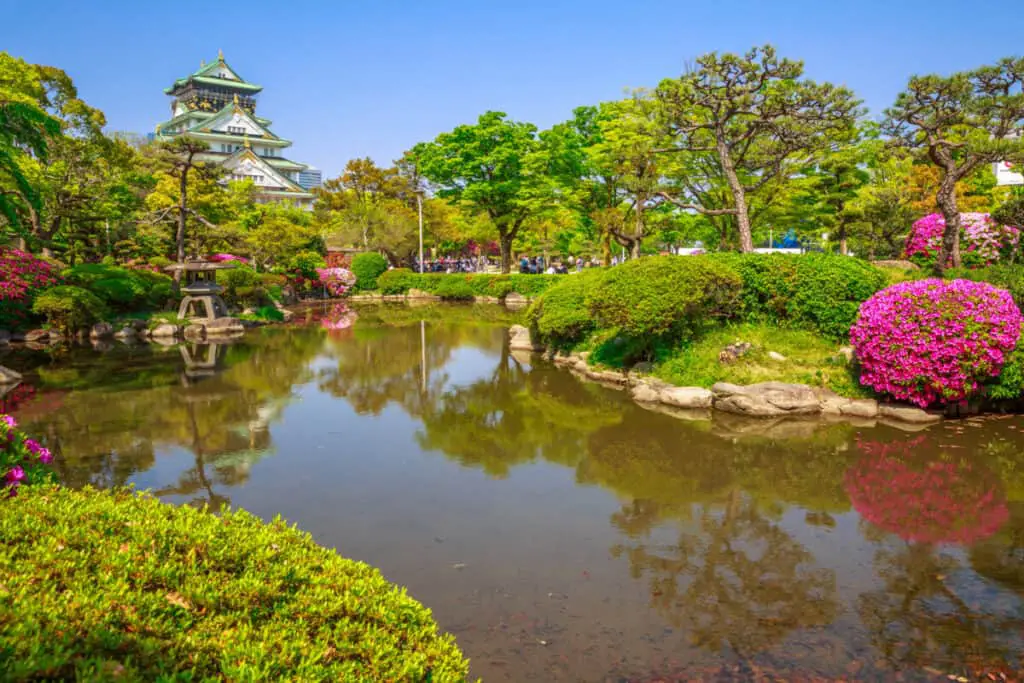
Osaka castle park is one of the best Hanami (a Japanese custom that involves viewing cherry blossoms in spring) viewing areas in all of Osaka during the cherry blossom season with about 600 cherry trees that bloom in late winter to early spring.
The museum inside the castle contains many artifacts and displays. A moving diorama of the past rulers of Osaka castle is contained on the 7th floor and showcases 19 separate scenes.
The 5th floor contains displays of miniature figures and folding screens showing what is referred to as the Summer War in Osaka.
Displays have subtitles in Chinese, Korean and English.
Osaka Castle View
Upon reaching the top floor of Osaka castle is an observation area. The open-air view has incredible panoramic views of the surrounding gardens and Osaka City can be seen in the distance beyond the castle’s moat.
It is said that Osaka castle contains the greatest number of artifacts in all of Japan (exceeding 10,000 pieces).
Some of the museum’s collections include amour, weapons, swords, folding screens, furniture, lacquerware, portraits, and even letters from the original rulers. The collection is so vast that it often is changed out as it can’t be all shown at once.
Entrance fees to the museum are 600 Yen for adults. Children under 15 are free and ID may be required. Group rates are available. Fees can be paid via Yen or Visa, Mastercard, and various payment apps.
Osaka is filled with many things that will enchant you with sights, sounds, smells, and tastes. My two favorites have always been Dotonbori and Osaka Castle. If your trip allows more time then you will want to spend many more days in the kitchen of Japan.

